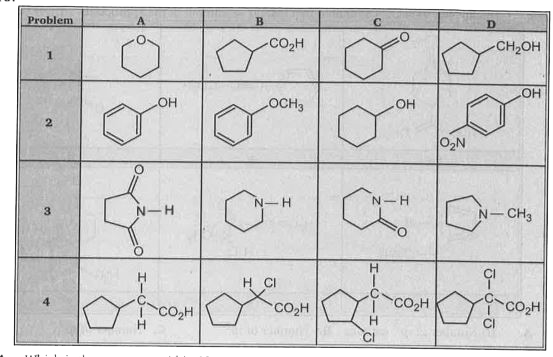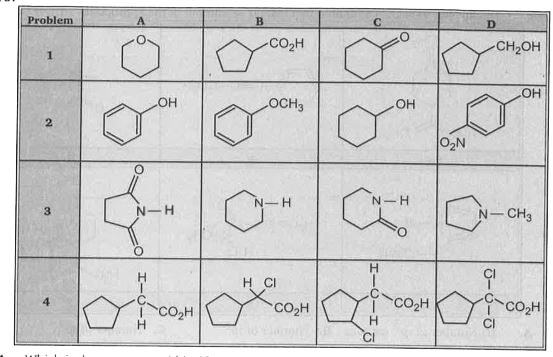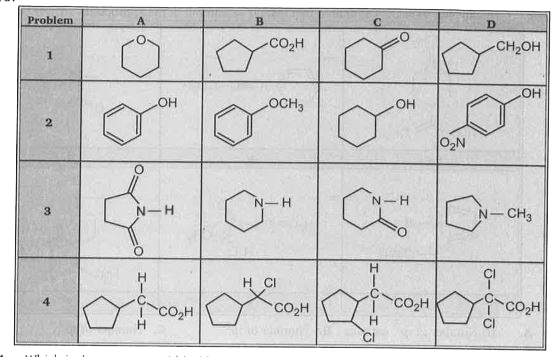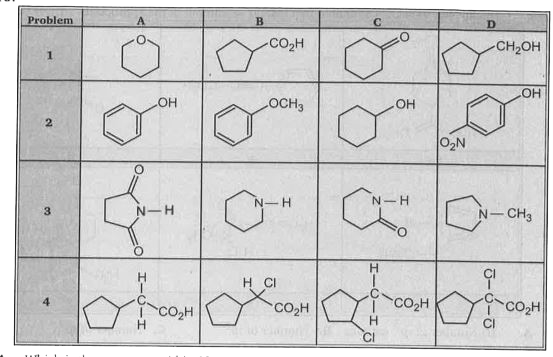Which is the weakest among the following types of bonds
ionic
covalent
metallic
H-bond
The correct Answer is:D
To determine which bond type is the weakest among Ionic, Covalent, Metallic, and Hydrogen bonds, we can analyze each type of bond based on their characteristics and bond strength.
1. Understanding Bond Types:
- Ionic Bonds: These are formed by the transfer of electrons from one atom to another, resulting in the attraction between positively and negatively charged ions. They are generally strong due to the electrostatic forces between the ions.
- Covalent Bonds: These bonds involve the sharing of electron pairs between atoms. They can be strong, depending on the atoms involved and the number of shared electrons.
- Metallic Bonds: These bonds occur between metal atoms where electrons are shared in a 'sea of electrons'. They are typically strong due to the attraction between the positively charged metal ions and the delocalized electrons.
- Hydrogen Bonds: These are not true bonds but rather a type of weak attraction that occurs when a hydrogen atom covalently bonded to a highly electronegative atom (like oxygen or nitrogen) is attracted to another electronegative atom.
2. Comparing Bond Strengths:
- Ionic Bonds: High bond dissociation energy, typically > 400 kJ/mol.
- Covalent Bonds: Varies widely but generally > 200 kJ/mol.
- Metallic Bonds: Varies but can be quite strong, generally > 200 kJ/mol.
- Hydrogen Bonds: Much weaker, with bond dissociation energies around 10-40 kJ/mol.
3. Conclusion:
- Based on the bond strengths, hydrogen bonds are the weakest among the types listed. They are primarily electrostatic attractions rather than true bonds, which contributes to their lower strength.
Final Answer:
The weakest bond among the following types is the Hydrogen bond.
---
- Ionic Bonds: These are formed by the transfer of electrons from one atom to another, resulting in the attraction between positively and negatively charged ions. They are generally strong due to the electrostatic forces between the ions.
- Covalent Bonds: These bonds involve the sharing of electron pairs between atoms. They can be strong, depending on the atoms involved and the number of shared electrons.
- Metallic Bonds: These bonds occur between metal atoms where electrons are shared in a 'sea of electrons'. They are typically strong due to the attraction between the positively charged metal ions and the delocalized electrons.
- Hydrogen Bonds: These are not true bonds but rather a type of weak attraction that occurs when a hydrogen atom covalently bonded to a highly electronegative atom (like oxygen or nitrogen) is attracted to another electronegative atom.
- Ionic Bonds: High bond dissociation energy, typically > 400 kJ/mol.
- Covalent Bonds: Varies widely but generally > 200 kJ/mol.
- Metallic Bonds: Varies but can be quite strong, generally > 200 kJ/mol.
- Hydrogen Bonds: Much weaker, with bond dissociation energies around 10-40 kJ/mol.
- Based on the bond strengths, hydrogen bonds are the weakest among the types listed. They are primarily electrostatic attractions rather than true bonds, which contributes to their lower strength.
The weakest bond among the following types is the Hydrogen bond.
Similar Questions
Knowledge Check
- Question 1 - Select One
The weakest base among the following is
ANaOHBKOHCCa(OH)2DZn(OH)2 - Question 2 - Select One
Weakest acid among the following is
Aacetic acidBphenolCwaterDacetylene - Question 3 - Select One
Weakest acid among the following is
Aacetic acidBphenolCwaterDacetylene





